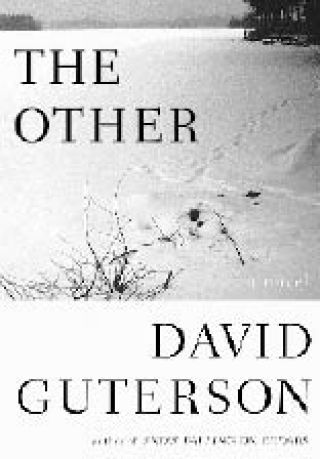Early in David Guterson’s new novel, the narrator, Neil Countryman, meets his doppelganger. At a track meet.
These two young Seattle high school men, both shaggy-haired and wearing pitch-perfect 1970s running shorts, race neck for neck for a time until one, finally, must pull out and win.
This setup scene encapsulates the essence of “The Other,” a book about togetherness and the essential apartness with which we conduct our lives, and the choices that implicate us along the way.
“These guys are two halves of the same whole,” Guterson said. “And they each project some aspect of the other onto themselves.”
The race, the first among hundreds of paths that Neil and John William Barry will find themselves on together over the course of their subsequent friendship, is a half-miler. Neil points out that the distance makes for the most awkward and confounding of competitions, requiring but not allowing the speed of a sprint, since it also demands such a big chunk of endurance.
And that, as they say, is life.
As the two get older, Neil – raised in a blue-collar Irish family – builds a comfortable, middle-class life as an English teacher with a real-estate appraiser wife, two sons and a bungalow.
John William, a rich, old-Seattle heir, drops out. Embracing the principles of Gnosticism, he sets up camp deep in the recesses of the Hoh rain forest and hacks a cave out of the rocks.
The action and tension of the novel, revealed in detailed, measured stretches about everything from philosophy to wilderness survival to teenage pranks, revolve around each character following what he believes to be the correct path, observing the other’s response along the way, and hoping for an outcome for himself and his “blood brother” that is fundamentally different from what it actually turns out to be.
Guterson volunteers that “The Other” is the only one of his novels that’s even close to autobiographical. He, like Neil, grew up in Seattle, attended the University of Washington and taught high school English. He knows the Seattle whereof he speaks.
He knows the woods too, having hiked a good deal in the North Cascades and the Olympic National Forest. And John William, Neil’s other half, is every bit as much a part of the author himself, that side of a man that wants not merely to drop out of sight and live unencumbered, but to fully and actually live by his convictions.
In that respect, Guterson also considers “The Other,” which took him five years to write, his own post-9/11 book. It began with a question, the one he heard so many people ask themselves after the event: “Why do they hate us?”
“And the answer for a lot of people was, well, ‘they’ have a problem,” he said. “But we also have a problem.”
Neil lives in a low-impact way: he rides his bike to work and drives a 1992 compact car. Yet he persists in a constant comparison between his life and John Williams’ extreme asceticism – the latter’s utter renouncement of fossil fuels, economic exploitation and the American will to consume.
“Neil experiences his life in an ambivalent way and a conflicted way,” Guterson said. “He knows very well that the way he lives is conflicted with his ideal. Which is true of most of us…we do all kinds of things today that go against what we espouse. For John William, in order to live up to his ideals, he can’t live with that.”
This tension between how we choose to live and how we want to live plays out in Neil’s narration and is, Guterson believes, a monologue many of us run through silently, constantly, every day. And he thinks many middle-class American men will relate to the Neil-John William dichotomy, “where part of you just wants to run away, be your own person, live by your own lights.”
Amongst the slim, tight crevices that exist between Neil and John William, is there any room for the other sex? Guterson himself wondered whether women would find much to like in a novel that so graphically depicted male bonding and the male fantasy of just disappearing.
The answer, he thinks, is yes and no, with the additional caveat that it depends on what a female reader is looking for.
As a young man, Neil meets his future wife, Jamie; the two develop what Guterson believes is a “really good” relationship. She’s still with Neil, still solid, funny, affectionate and very much herself, years later, at the point of Neil’s present-day narration.
Rather than sizzle, their relationship reflects what Guterson thinks is the most mature manifestation of love between partners, the kind that evolves over time from a romantic desire to see ourselves reflected in the other, to an expanded variety that honors and respects the other for what he or she is, with nothing required in return.
While Neil achieves this, John William, for all his ideals, is literally stuck in the woods.
Guterson has spoken to women who look at enigmatic, unattainable John William with recognition, as reminiscent of men whose passion they were drawn to, even though the passion was unworkable because it wasn’t for them.
“I think guys will relate to the conflict,” Guterson said. “I think for women, the only way in is to say, ‘I’ve known guys like that.’”
Where does that leave one of the book’s primary concerns, the pursuit of happiness? Guterson doesn’t really answer the question except to indicate that in the face of nearly constant compromise, the ideal of “happiness” might not be possible if one isn’t willing to settle and make peace with that “other,” who is in the end, “inner.”
“You really can’t walk away from your own shadow,” he said.



